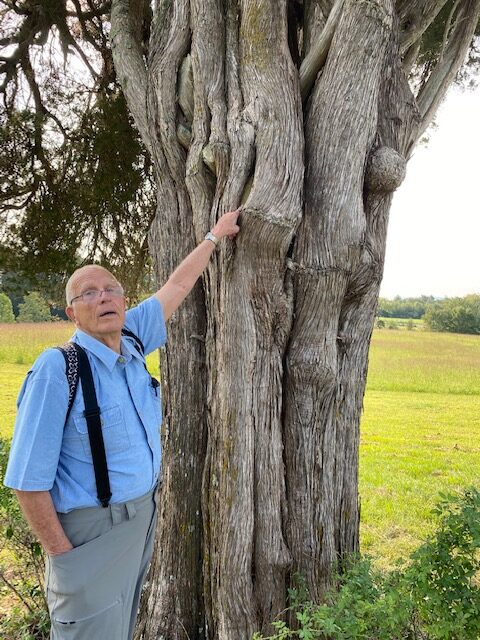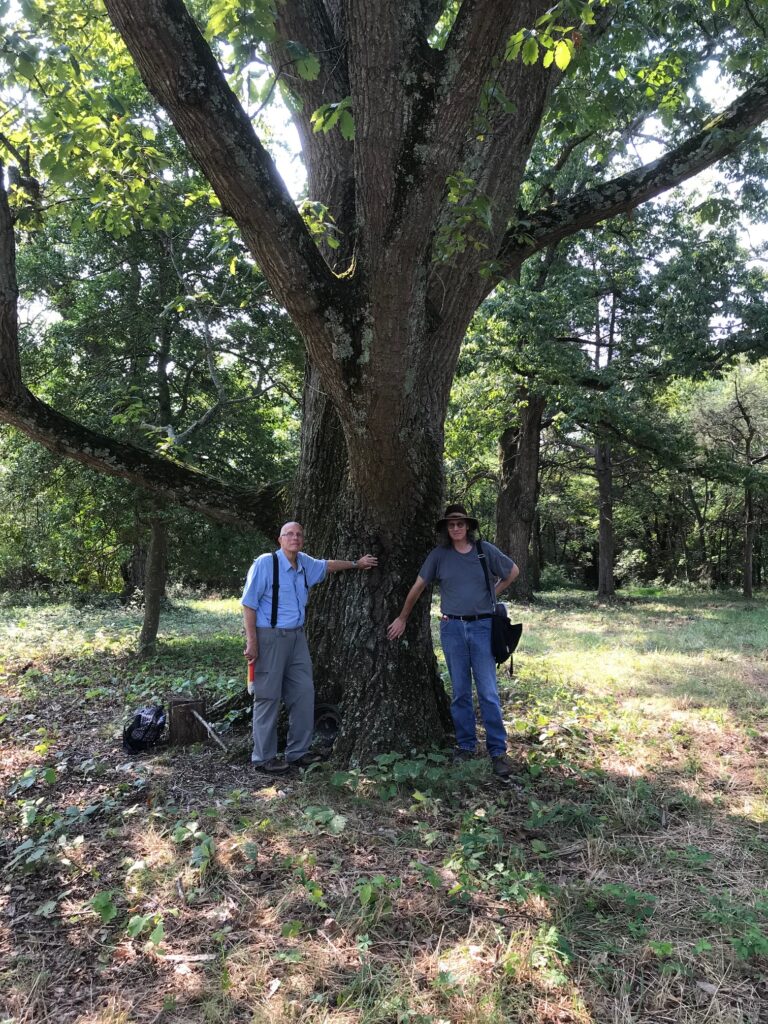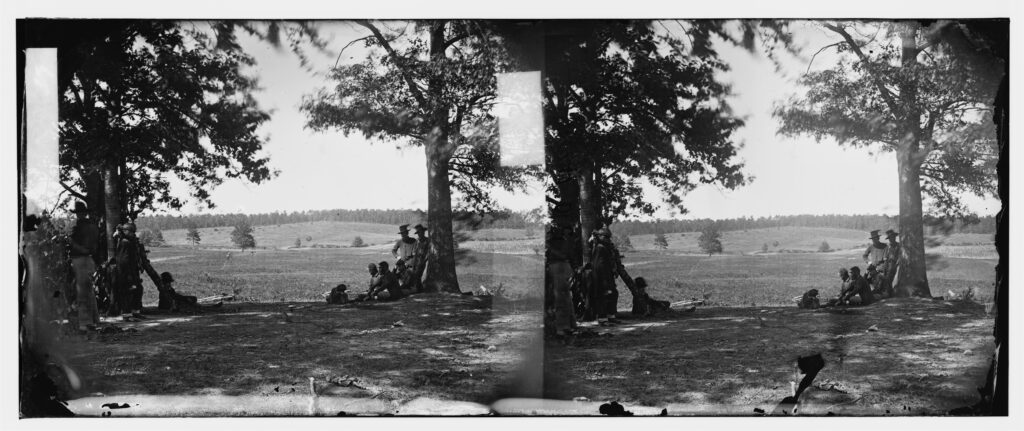In mid September, the Friends of Cedar Mountain (FCMB) board was honored to host an interesting visitor: Dr. Gary Strobel, a renowned microbiologist and naturalist who makes beautiful pens and other items such as small magnifying glasses from the wood of witness trees. Dr. Strobel and his wife Soozie spent a few days in Virginia exploring a number of area battlefields in hopes of identifying trees that may have witnessed the clash of armies during the Civil War.
Dr. Strobel, an enthusiastic student of the Civil War, has made more than 150 Civil War Witness Pens representing the sites where he has collected wood from witness trees. At the heart of his labor of love is generosity: he has gifted countless more pens to the sites where the trees are located, and sale of the pens helps support the sites’ preservation and education efforts.
Dr. Strobel first came to the attention of the board through FCMB president Diane Logan, whom he contacted as part of his ongoing outreach to battlefields. Her home is located in the core battlefield area for Cedar Mountain, and she suspected an especially large cedar on her property to be a witness tree. Dr. Strobel concurred after seeing images of the tree and was able to visit the tree during his stay in Virginia.

On the preserved area of the battlefield there are a number of large trees that members of the board had identified as potential witness trees. Identification of a tree as a witness tree can only be confirmed by doing a core sample, where a thin drill is inserted into the trunk to extract a cylinder of wood. Injury to the tree is a risk with this invasive procedure. FCMB has chosen to follow a cautious and non invasive but less exact approach that pairs species identification with measurement techniques to get an approximation of a tree’s age.
A stroll of the battlefield with Dr. Strobel on a sunny Sunday in September focused on the trees earlier identified by board members as potential witness trees. This was Dr. Strobel’s first visit to Cedar Mountain. During the walk, historian/guide Brad Forbush provided relevant context to the scene by describing troop engagements on the day of the battle.
Two of the battlefield’s largest oaks, situated quite near each other, were identified as witness trees by Dr. Strobel. Both are located near the farm road that heads northwest from General Winder Road near the Crittenden Gate. Near the old Throckmorton home site, a chestnut oak about 14’ in diameter could be 300 years old, according to Dr. Strobel. Further down the farm road, a pin oak near the Stonewall Brigade monument, while slightly larger in diameter, is a bit younger in age. Both are magnificent trees with thick trunks and broad-reaching crowns.

It was exciting to hear Dr. Strobel’s confirmation of these two large oaks as witnesses to the 1862 battle. Due to time constraints we were unable to visit an additional half dozen oaks and a cedar that also may be witness trees. Certainly Dr. Strobel is very welcome to return to Cedar Mountain to continue his witness tree investigations.
Learn more about Dr. Strobel’s work by visiting his website at civilwarwitnesspens.com
We look forward to sharing any news that develops regarding these venerable trees. If you visit the battlefield in search of the trees, we ask that you please keep in mind the following guidance from the American Battlefield Trust, our partners in preservation of Cedar Mountain Battlefield:
“There is a special kind of thrill when you visit a witness tree. Next time you’re on a battlefield, see if you can find one. Be sure to respect boundaries and markers and do no harm to the tree so that the people who come after you can also visit these ancient symbols. By recognizing important features of battlefields like witness trees not just for their presence at the time of battle, but as a symbol of growth and a healthy environment, we can continue to ensure these beautiful landscapes will still be around for the next generation.”


